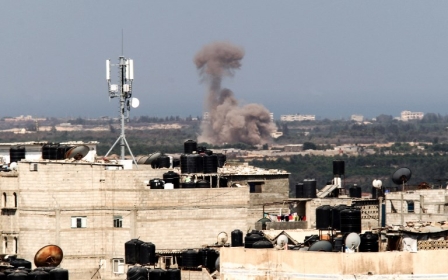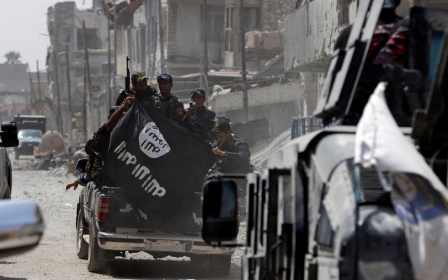ANALYSIS: Egypt's economy on path to recovery

Things are looking up for Egypt’s beleaguered economy. At least investors think so, which is why they are pouring money into the country. Analysts are optimistic also. The news must come as welcome relief for the country's residents who have suffered brutal inflation and soaring unemployment.
In what must be one of the bitterest ironies of this decade, the optimism of the Arab Spring in 2011 quickly turned sour as Egypt became mired in economic malaise.
In the five years before the uprising, Egypt’s unemployment hovered around 9 percent but shot up thereafter to a peak of 13.4 percent in 2014, according to data from the Trading Economics website. Economic growth has been weak too, slipping from around a 4 percent annualised rate before the uprising, to about 2 percent in the years 2011 through 2014. It is now rebounding.
I am optimistic about Egypt. What happened in the last six months is encouraging in terms of the bold economic moves they made
- Garbis Iradian, IIF
Inflation has soared - it started in 2016 at around a 10 percent annual rate before soaring to a peak of 31.5 percent in April this year, again according to Trading Economics.
In the last five months, “average food prices grew fast, at 40 percent” versus the prior year, according to a recent report from the Institute of International Finance (IIF). Such inflation also makes implementing economic reforms tougher as it inflicts economic hardship on those who can least afford it - the poor. It's a problem because reform is what President Abdel Fattah al-Sisi’s government has been implementing.
Reforms
The reforms can be broadly lumped into two categories. The first set came in 2014 with a series of domestic-led programmes aimed at helping balance the government budget, reducing subsidies on fuel, and removing barriers to foreign investment, among many other things, according to a World Bank report.
Those domestic-led efforts went well enough to auger in the second part, a $12bn loan package from the International Monetary Fund in late 2016. The package, which is being doled out in stages, aims to promote private-sector economic activity, reduce inflation to single digits, and to “mitigate the impact of the reforms on the poor,” according to the IMFs statement on the loan package.
“I am optimistic about Egypt,” says Garbis Iradian, chief economist for Middle East and North Africa at IIF. “What happened in the last six months is encouraging in terms of the bold economic moves they made.”
In particular, he noted that allowing the exchange-rate to drop late last year was “the boldest move”. While it may help the country with exports in the longer term, in the meantime it makes imports more expensive.
Good news
The good news on the reform front is that this year there is light at the end of what has been a dark economic tunnel. Growth is expected to reach 3.5 percent this year, according to a recent report from New York-based bank Brown Brothers Harriman (BBH). Meanwhile, inflation has dropped to 29.7 percent in May from April’s record. It is expected to drop to around 18 percent by year-end, according to IIF forecasts.
Inflation is often a problem for foreign investors because it depletes the spending power of the money earned inside the country and that incoming investment will be vital for Egypt to grow.
BBH sees a credit upgrade for the country in due course “if Egypt can stick with the reform plan”. Key to getting that upgrade will be reducing the government deficit and attracting foreign capital. Already, the government has kept a lid on wage costs for the first 10 months of the fiscal year, says Iradian, so there is progress on that front.
A credit upgrade should help lower borrowing costs for the government and ultimately all borrowers inside the country.
Currently, credit ratings from the major agencies such as Standard & Poors and Moody’s, are “single B,” which means it is risky to lend money to Egypt.
“Adverse business, financial, or economic conditions will likely impair the obligor's capacity or willingness to meet its financial commitments,” says S&P of B-rated bonds. Or put another way, there is a meaningful risk that lenders won’t get their money back.
Capital flowing in
Perhaps the best news of all is that capital is starting to flow into the country. “Foreign investors have taken notice [of the economic reforms] with inflows picking up sharply,” states a recent report from BBH.
Capitalist economies simply cannot grow without capital, so the news that investors are committing their cash to Egypt is welcome. Apart from the statements in BBH’s report, we see evidence of increased investor interest through the soaring local stock market.
The Egypt EGX 30 price index, which tracks the prices of 30 important stocks, rallied to a record high of 13683 in June this year from lower than 5800 in January 2016.
The 139 percent gain in the index is pleasing for a couple of reasons. One is simple: it is an investor thumbs-up to the Egyptian economy in general and the reforms specifically.
The second reason is that when foreign investors buy Egyptian stocks they first need to purchase Egyptian pounds with hard currency (typically greenbacks.) That fills Egypt’s coffers with dollars.
There is evidence that this is happening. BBH notes that foreign exchange controls have eased “suggesting policymakers no longer see a dollar shortage” inside the economy. Dollars are needed to buy imports of vital raw materials and foodstuffs on the global market.
The net result of all the reforms is that the economy should grow at 4.5 percent in 2018 up from a forecast 3.5 percent this year, says BBH. With faster growth, cooling inflation, and inflow of foreign capital, the jobs situation should get better.
It may have been a long time in coming, but it looks like Egypt might make it through the bad times.
Middle East Eye propose une couverture et une analyse indépendantes et incomparables du Moyen-Orient, de l’Afrique du Nord et d’autres régions du monde. Pour en savoir plus sur la reprise de ce contenu et les frais qui s’appliquent, veuillez remplir ce formulaire [en anglais]. Pour en savoir plus sur MEE, cliquez ici [en anglais].




